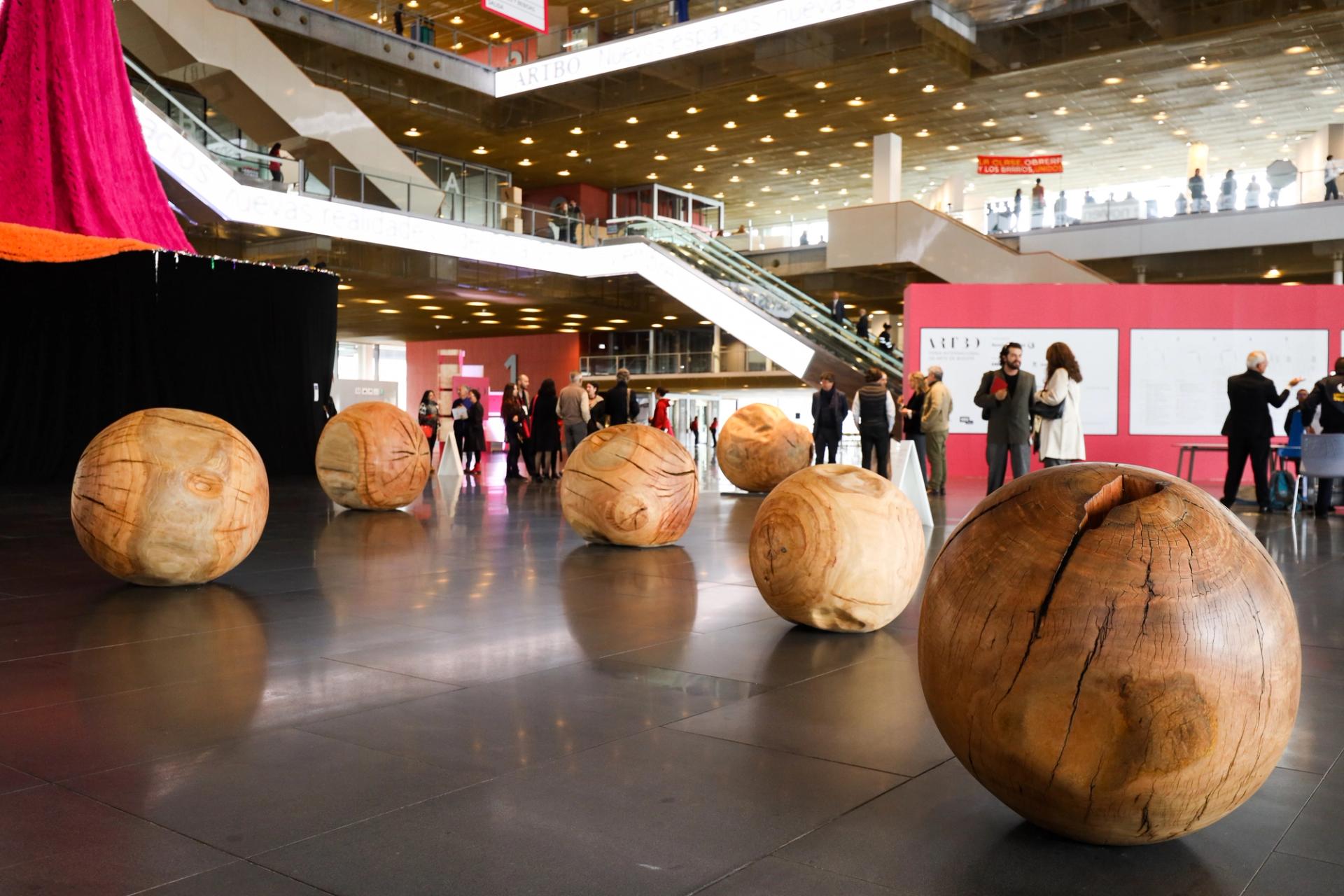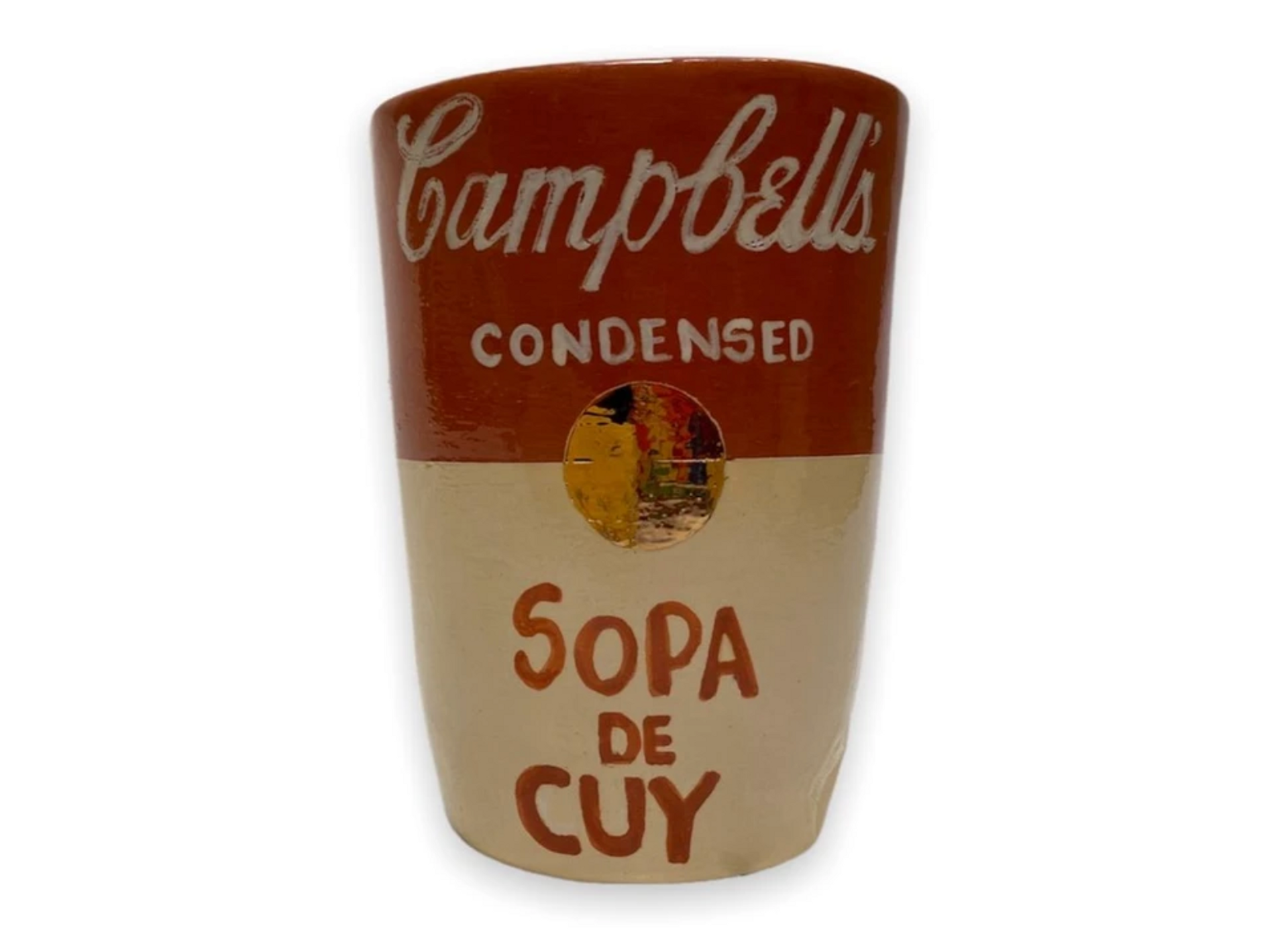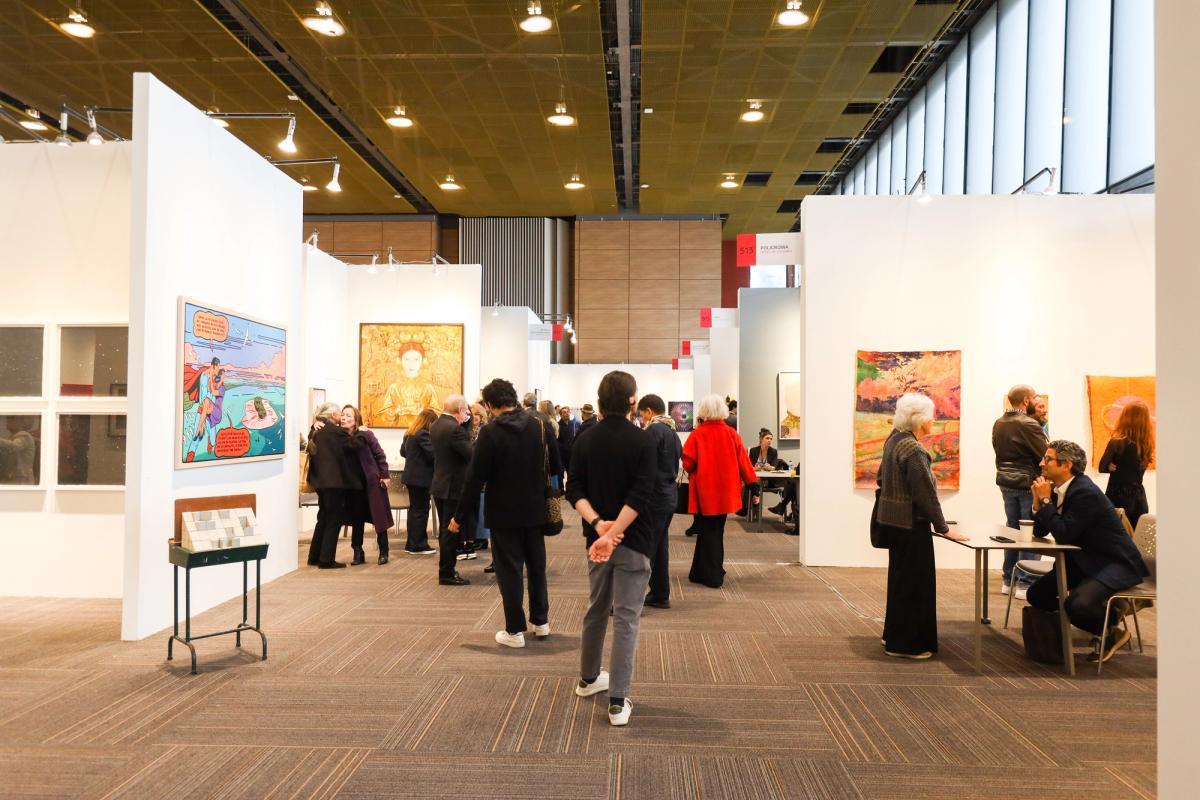Artbo in Bogotá, Colombia's premier art fair (until 25 November), opened its 19th edition in a new location and on a new date. Visitors at the VIP preview yesterday (22 November) perused stands spread across five stories of the sprawling Ágora Bogotá convention centre, with panoramic views of the city and the surrounding Andes Mountain Range in the background.
Despite the falling value of the Colombian peso and political unease over recent elections, dealers approached by The Art Newspaper reported plenty of buyer interest as well as some sales. Leon Tovar, who founded his gallery in 1991 in Bogotá before relocating to New York in 2012, placed a small untitled work by the Colombian artist Santiago Cárdenas for $30,150 and a large wooden sculpture from the Peruvian artist Jaime Miranda-Bambarén's Seeds series for $55,000. Examples of the latter were dotted throughout the lobby near the entrance of the fair. Tovar represents both artists.

Seed sculptures by Jaime Miranda-Bambarén in the lobby of the Ágora Bogotá convention center. Courtesy Artbo
“I was a little surprised, because the political situations in Latin America are extreme sometimes," Tovar says. "But they’re very positive here, we got some sales in the early hours."
Among the most popular works at Artbo are Sergio Ferro’s handmade ceramic soup cans at Bogotá gallery Salón Comunal’s stand. A Colombian twist on the Warholian Campbell classic, Ferro paints the names of local varieties of the dish, like "sopa de lentejas", onto small vases. The soup cans, priced at around $60 each, were nearly sold out within hours of the fair’s opening.
Artbo's director since 2012, María Paz Gaviria, the daughter of the former Colombian President César Gaviria, says that one of the fair’s strengths is that it has remained distinctively Latin American throughout the years. Around two-thirds of the 33 galleries taking part in Artbo’s main fair section hail from Colombia, with the rest coming from countries like Argentina, Brazil, Chile, the US, Spain and France. The fair typically welcomed around 70 galleries in the years just before the onset of the Covid-19 pandemic (Along with the main art galleries, Artbo hosts separate sections for design, large-scale installations and smaller goods, like zines, posters, tote bags and journals).

Sergio Ferro’s handmade ceramic soup cans at Bogotá gallery Salón Comunal’s stand
Courtesy of Salón Comunal
“Artbo has positioned itself as the fair with the most Latin American content, in terms of its composition, with emerging art, as a place of discovery and as a very boutique fair.” Gaviria says. “For that reason, it has always drawn maybe the most international visitors of fairs in Latin America.”
Those international clients can be a lifeline for dealers in Colombia.
“The art market in Colombia has always been very fragile. So this is a very, very important moment for the local art scene,” says Paula Bossa, the curator and director of operations at Bogotá gallery Casas Riegner. “We're always expecting international visitors and although the dates are a bit complex, it's been a nice surprise to see some very interesting visitors.” At Casas Riegner's stand, ceramics exploring the female form by the Colombian artist Luz Lizarazo range from $600 to $3,000; a drawing by the artist is also being offered, priced at $3,800.
While the VIP preview was well-attended, this year’s iteration of Artbo overlaps with the American Thanksgiving holiday, and very few visitors from the US were present. The fair is typically held in late October, but this year those dates clashed with regional elections in Colombia and the fair’s previous venue, another convention centre near the Ágora Bogotá, serves as one of the country's largest polling locations.
“Conditions of the market are very much tied to political conditions. That is always the case, of course. And it's very much the case during Artbo,” Gaviria says. “We just went through a mayoral election here in the city of Bogotá and you saw a very dramatic shift a couple of weeks ago in the price of the peso, which of course affects the art market.”
Economic woes
The value of the Colombian peso sank last week after new government figures revealed the country’s economy shrank in the third quarter of the fiscal year, marking Colombia’s first year-on-year economic contraction since 2020 as both high interest rates and inflation continue to curb spending (galleries at Artbo tend to sell works priced in US dollars). Last month, candidates backed by President Gustavo Petro, Colombia’s first leftwing president, were defeated by opposition candidates in regional elections that were widely viewed as a referendum on the president’s first year in office. For decades, Colombia was caught in violence between powerful drug cartels, right-wing paramilitary groups and left-wing guerrilla movements.
Contemporary art is particularly challenging to sell in Colombia, where there’s still a strong taste for traditional art forms, though dealers say there is no shortage of young, talented artists creating groundbreaking work.
“I believe the Modern market is strong, but the contemporary market is just starting, so it's kind of difficult and tricky for contemporary galleries to keep afloat. We are a new market,” says Katy Hernández, the director of Galería Espacio Continuo in Bogotá. The gallery is offering Ana María Rueda’s Celosía (2023), a textile and plaster hanging, for $9,000. “We have amazing artists here in Colombia, but we need international visibility,” Hernández adds
This is a sentiment echoed by Omayra Alvarado-Jensen, the executive director of Instituto de Visión, which operates galleries in both Bogotá and New York. She says that the gallery has sold works largely to international collectors at Artbo this year, and that its Colombian market is smaller because of the Colombian economy and the value of the peso (Alvarado-Jensen often offers Colombian collectors and institutions special rates, she says).
“We have wonderful artists, very powerful and refreshing practices and people producing from very different backgrounds,” Alvarado-Jensen continues. “When you live in a place like Colombia, where there's—unfortunately—so much social and political turmoil, that is a place where great art can come from.”


